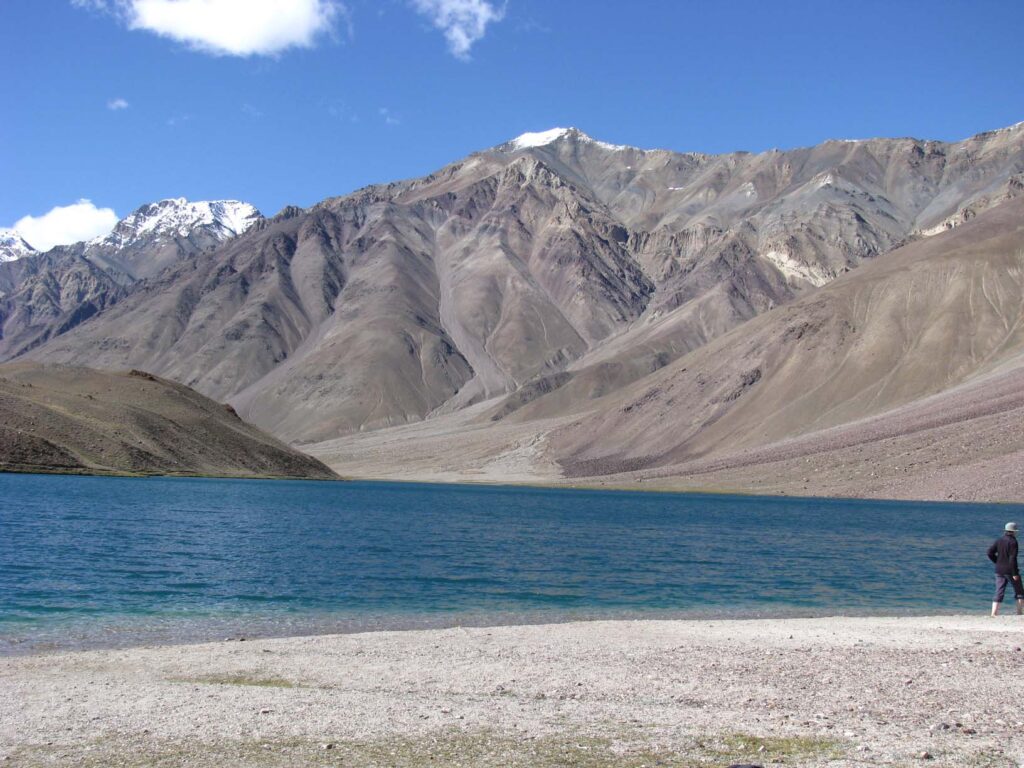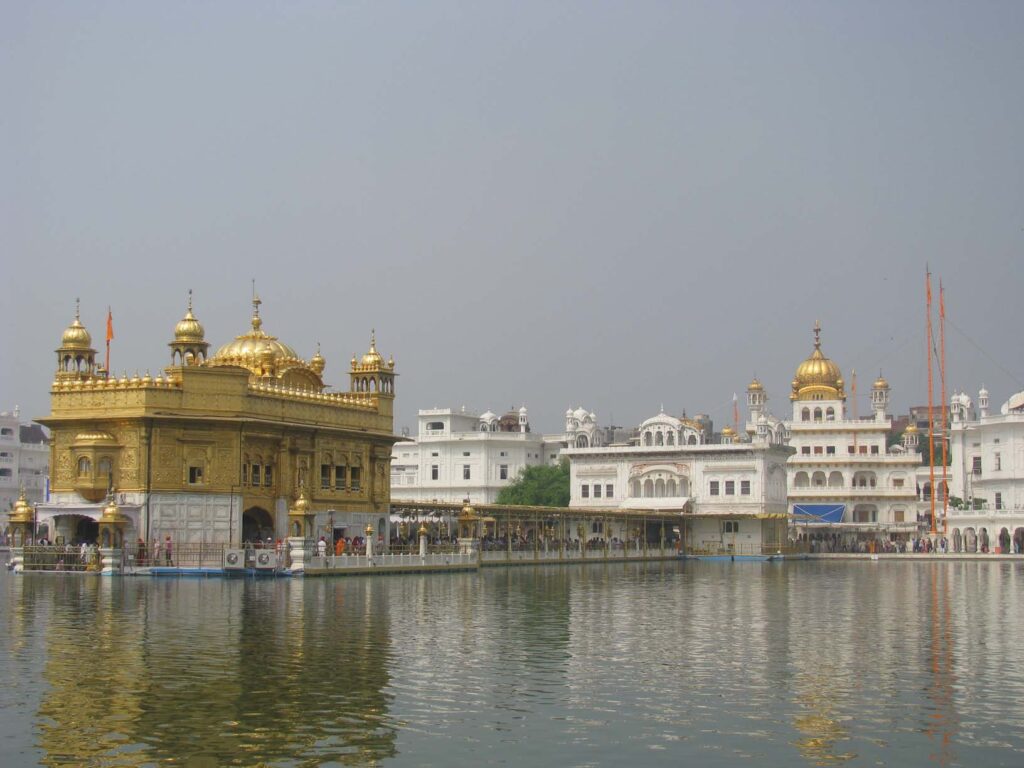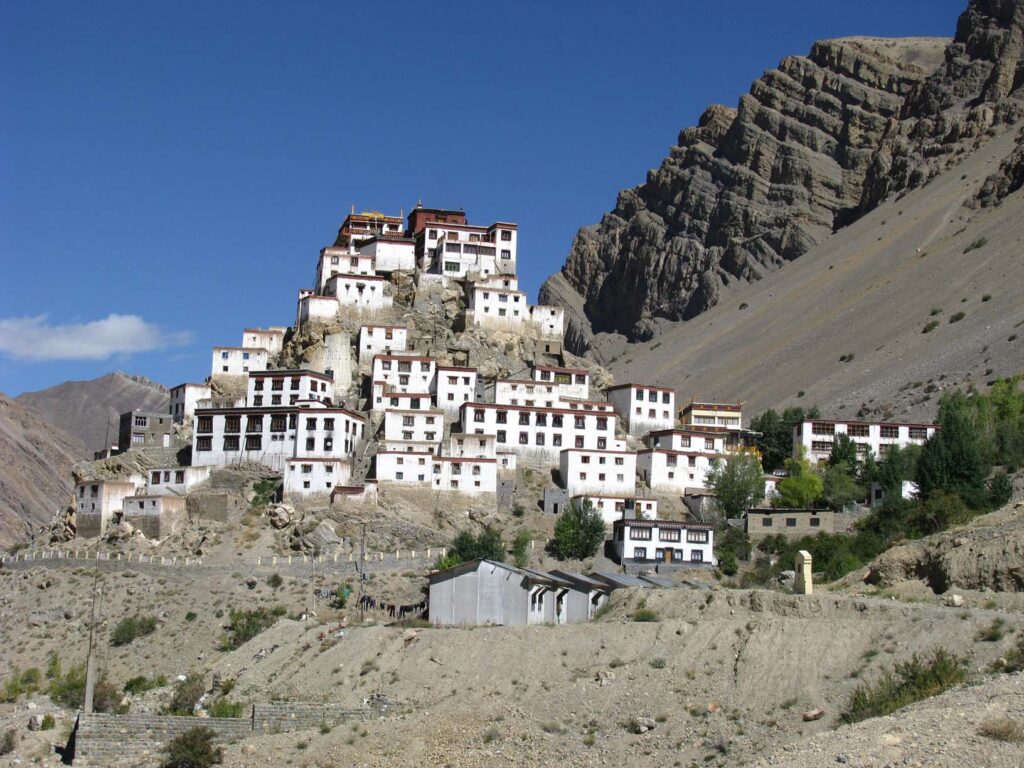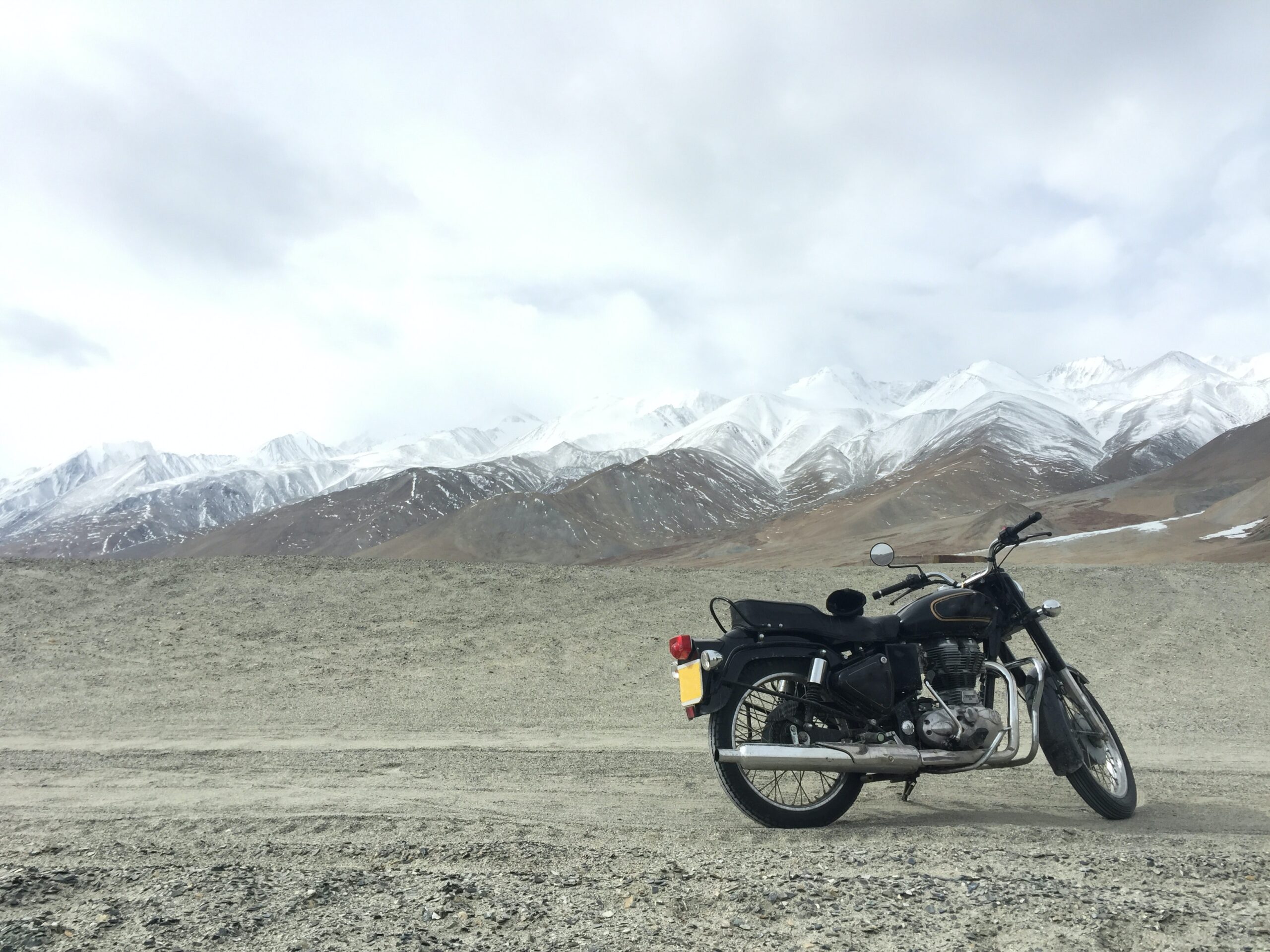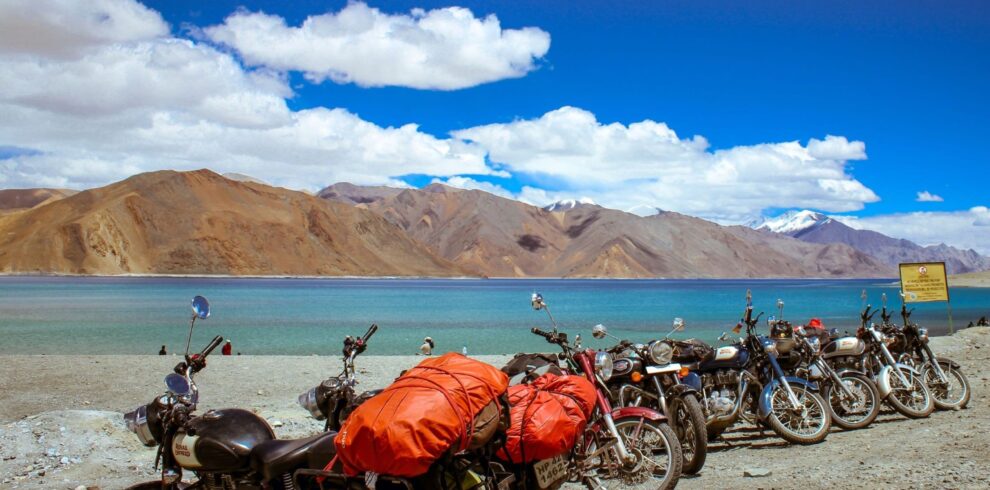Overview
This bike tour gives you not only the thrill of the Indian mountainous road but will astonish you with the culture shock. This tour has been designed to give you the experience the Ladakh landscape and culture but in different region called Spiti valley. Spiti, once fabled as the forbidden land, is a part of India where the Tibetan Plateau crosses over into India. High-altitude deserts, lunar landscape, wide-open valleys and ancient Buddhist monasteries make this a motorcycling paradise. There are some tough dirt-roads to negotiate through Lahaul Valley, but the grassy meadows over in Spiti are a handsome reward for the riders who dare venture on their motorcycles into this corner of the Himalaya.
After the bike tour we shall visiting some of the holy places of India. First we shall visit Macleodganj the Residence of Dalai Lama which is popularly known as Dalai Lama temple. Macleodganj is also known as Little Lhasa. Later visit the holiest place of Sikhs Amritsar. The Golden Temple or Darbar Sahib situated in Amritsar. Golden temple is the most sacred temple for Sikhs. The tour end with the sightseeing of Delhi.
Highlights:
- Manali
- Banjar Valley
- Sangla
- Kalpa
- Tabo
- Dhankar
- Kaza
- Kibber
- Chandra tal
- Macleodganj - Residence of Dalai Lama
- Amritsar - Golden Temple
- Delhi
Itinerary
Arrive Delhi upon arrival transfer to Hotel. Forenoon free to relax in the hotel. Later in forenoon 05 drive to Chandigarh upon arrival transfer to the hotel.
Overnight at the Hotel.
Meals : B
After early breakfast we drive 08 hours to Manali. Upon arrival transfer to the hotel.
Manali which is one of the show place for a lavish display of natural scenery. North, South and West is ostentation of pinnacles and ridges, which, in fine weather, stand outing bold relief against the skyline. Deep, purplish crevices, overhung by scarped cliffs, reach down toward the valleys. Silver streaks of water, glistening in clear sunlight, cascade over perpendicular heights. Lofty thatches, from which the snow has melted, from vivid green patches of grassland, their clarity enhanced by darker surroundings. At the lower elevation and in every direction the eyes may wander, serried battalions of evergreen pine flank the sides of sheltered ravines and ascend in irregular formations, towards rock-crowned crests. Manali is the real starting point of an ancient trade route which crosses the Rohtang and Baralacha passes and runs, via lahaul and Ladakh to Kashmir, while divergent paths connect it with Spiti, Zanskar, Rupshu, Tibet and other remote countries in central Asia.
Overnight at the hotel.
Meals: B
Day 04 Manali Day to acclimitization and to explore the beautiful Manali
Overnight at the hotel.
Meals: B
Today we have an easy ride down the Kullu Valley. The valley is famous for apples, plums, pears and beautiful alpine topography. We ride down to Kullu town and go past Bhuntar airfield. After Bhuntar we cross over the Beas river at Aut into the Banjar Valley. The roads are fine till Banjar. After that the route becomes quite steep as we climb towards Jalori Pass (3134 m) and we need to ride all the way up till Shoja village, a beautiful mountain village located amongst thick cedar forests. We stay for the evening at Banjara Camps.
Overnight Camping
Meals: B, D
After breakfast we do the final climb up to Jalori Pass (3134m). This pass remains closed in winters for months due to heavy snowfall. After we cross Jalori Pass the road descends downwards and we reach Ani, a small township. In the afternoon we finally reach Sarahan and check into our hotel. After lunch we can visit the famous Bhimakali Temple and explore its unique architecture, which is believed to be 800 years old. We spend the night stay at a Guest house in Sarahan.
Overnight at the Guest house
Meals: B, D
Today we start our ride early. The roads are a mix of good tarmac and broken patches. The Sangla Valley (also called Baspa Valley) is named after the river Baspa. The valley is famous for its quality apples and trout fish found in the Baspa river. You can enjoy the beauty of the Sangla Valley while riding along on your Royal Enfield, the low-revving engine thumping lazily in the afternoon. After a long ride through the valley we reach Sangla, a small township. Here you can find ATMs, a petrol station, restaurants and shops. You can park the bikes and go for a walk around the place and experience the Kinnauri culture of this valley. After hanging around for some time in Sangla, we ride towards Kalpa towards our Guest house and check-in for our night stay.
Overnight at the Guest House
Meals: B, D
After an early breakfast we ride from Kalpa towards the main highway for Spiti. The topography gradually changes from green to harsh, rocky mountanous terrain. As we reach Nako (3625m) you can see the village below the Reo Rurgyal Mountain Range. Nako has a small lake called Nako lake, the gem of this village, and the main attraction here for many tourists. Nako Monastery dates back to the 11th century and is yet another attraction of this village. Apples and sun-dried apricots are the main cash crop of this village. After exploring Nako you can relax in your tents at the campsite.
Overnight Camping
Meals: B, D
On the way to Kaza we visit Tabo and Dhankar Monastery. The Tabo monastery is famous for its exquisite murals and stucco sculptures, described by His Holiness, the Dalai Lama, as ‘a delightful expression of the Indo-Tibetan collaboration in spreading Buddhist culture’. The contrast between the simple mud brick exterior and the resplendent ornate interiors of the Tabo monastery is spectacularly striking and a must see for every visitor.
Dhankar Monastery dates back to the 12th century. It is built on top of a ridge, a precarious and strategic location that overlooks the confluence of the Pin and Spiti rivers. After exploring this magnificent monastery we ride to Kaza. Kaza is the main marketplace for all of Spiti. Here you can make calls, check e-mails, etc. In the evening we stay in our guesthouse in Kaza, with dinner and beer out in the garden, under the stars that light up the Himalaya.
Overnight at the Guest House
Meals: B, D
Next morning we ride to Ki Monastery, one of the biggest and oldest monasteries in Spiti valley. Ki looks like it is out of a fantasy story, with the fortress-like monastery located on top of a short hill and Ki village lying at its base. After spending a good time at this complex, we ride to Kibber Village (4400m), the second-highest village in the world with electricity and a motorable road. We ride back to Kaza in the evening and spend the night in Kaza.
Overnight at the Guest House
Meals: B, D
Today we ride to Chandratal Lake (4300m). From Kaza to Losar the road is fairly rough tarmac. Losar is the last inhabited place in Spiti valley. After this it is all wild Himalaya all the way to Manali. After we exit the Spiti border, right after Losar, the road turns into a dirt track, strewn with rubble and small rocks, so you need to ride cautiously from here onward. After Losar we have to cross our second pass of the tour, the Kunzum La (4590m). It is a beautiful pass and you get the feeling of climbing up to the sky, through the Greater Himalaya. We reach our destination - Chandratal - in the afternoon (chandra = Moon, tal = Lake). We spend the night at a campsite by the crystal clear waters of the Chandratal.
Overnight Campsite
Meals: B, D
This is the last day of our tour and we set out for Manali after breakfast. The roads here are very bad, we have to ride slowly and carefully. On the way we cross Batal and Chattru. This ride is probably the most beautiful part of the ride, through the truly wild parts of the Himalaya. Finally we reach Gramphu and climb all the way up to the Rohtang Pass (3978m). After crossing Rohtang we have to decend down 51 km to reach Manali. Its a visiual delight to see again all that greenry which was missing the past many days during our stay in the Spiti valley. After reaching Manali we check in to hotel rooms, relax and freshen up for a get-together in the evening.
Overnight at the Hotel
Meals: B, D
08 hours drive to Mcleodganj and later visiting the Residence of Dalai Lama which is popularly known as Dalai Lama temple.
The Kangra Valley is situated between the Dhaula Dhar and Shivalik foothills. It is named after the town and fort of Kangra. But now the largest and the main center here is Dharamshala. Dharamshala is set against the backdrop of the dramatic Dhauladhar Mountains. Perched on the high slopes in the upper reaches to the Kangra Valley, it is a charming town with elegant colonial bungalows nestling in the thick conifer forests. Dharamsala is divided into two distinct parts: Lower Dharamsala is the civic and business area with the courts and kotwalis bazaar; upper Dharamsala is composed of places with unexpected names riniscent of imperial days like Macleod Ganj and Forsyth Ganj. Dharamsala is also the home of Dalia Lama, the spiritusl heat of the Tibetan Buddhists, who is now headquartered at Macleodganj. Also known as little Lhasa, Macleod Ganj is and enchanting world in itself where the spinning wheels and fluttering prayers flags spread the message of peace and funeral harmony. There is strong Tibetan influence in Macleod Ganj with monks in deep red providing a splash of colour wherever you look. The Dalia lama settled here after his flight across the Himalayas following the Chinese invasion of Tibet in Oct 1959.
Overnight in a hotel.
Meals: B
05 hours drive brings us to Amritsar.
Amritsar: The Golden Temple or Darbar Sahib situated in Amritsar. Golden temple is the most sacred temple for Sikhs. It is a symbol of the magnificence and strength of the Sikh people all over world. In its architecture are included, symbol associated with other places of worship. This is an example of the spirit of tolerance and acceptance that the Sikh philosophy propounds. The Harmandir Sahib or the sanctum was envisioned by Guru Arjan Dev. This was conceived by him to reflect the resoluteness, clarity and simplicity of the Sikh religion. The Harmandir Sahib today stands as the hallowed symbol of the indestructibility of the Sikh faith. The gilding marble, mirror and inlay work on the Harmandir Sahib came much later. It was the nineteenth century during the region of Maharaja Ranjit Singh, that the proud people of Punjab lavished their wealth on their shrine in Amritsar. The Granth Sahib, the holy books of Sikhs was installed in the Harminder Sahib itself in 1604 three years after its completion. The location of the granth sahib here adds to the sanctity & reverence of the Harminder Sahib. Here lies the heart of Sikhism. The most important tourist centre in the state is Amritsar with its Golden Temple. This temple is considered to be the holiest of all the pilgrimages of Sikhism and houses “Akal takht”, the supreme governing body of Sikhism. The Jalianwallah Bagh is a small park in the city where many pilgrims were massacred by the British police in the year 1919. Wagah is the only open land point between India and Pakistan. The changing of guards and the ceremonial lowering of the flags ceremony at sundown and great tourist attraction.
Overnight at the hotel.
Meals: B
Full day to explore the beautiful Amritsar. Visiting Jaliawala bagh, Golden temple and later the colorful market of Amritsar. Later in the evening transfer to railway station to board our train for Delhi.
Overnight at the hotel.
Meals: B
After breakfast we will proceed for sightseeing of Delhi. Thereafter we proceed for the sightseeing tour of Old and New Delhi showing the remarkable contrast between the old city and the spacious layout of the New City. There is much to see and do in Delhi, Capital City of independent India. Seven cities have existed here since the 10th century, ruled over by Rajputs Turks, Afghans, Mughal and the British. Delhi is two cities in one – the Old Delhi of the Mughals, created by Shah Jahan and still a conglomerate of medieval palaces, forts, mosques and bazaars; and the New Delhi built by the British, an elegant metropolis of road avenues, stately homes and landscaped gardens. The coexistence of the old and the new, common features of modern Indian cities is nowhere more obvious than in Delhi. Delhi is the seat of government, and what a visitor sees here is a reflection of what is happening in the country as a whole. To begin with, Delhi- both Old and New – is a shopper’s paradise. India’s innumerable crafts and silks are all available here at various state emporia, Central Cottage Industries and in privately owned shops. You can eat to your hearts latest in Delhi, in little roadside dhabas that dish out mouth-watering kebabs, naans and an exquisite range of Tandoori cuisine, cooked fresh and on the spot. You could also spend a fine evening at fabulous restaurants in deluxe hotels, which offer an equally wide variety of cuisines – Indian, Continental and Oriental.
Later in the evening transfer to the International airport to connect the homeward flight.
Meals:B
Inclusions / Exclusions
Inclusions:
- All hotel, guesthouse and camping on twin-sharing basis.
- Air-conditioned Car / Coach transportation throughout the tour as per programme mentioned above. However in the mountains it will be Non air-conditioned.
- Meals included as per abbreviations as above programme: B = Breakfast, L = Lunch, D = Dinner.
- Royal Enfields Himalyan for riders.
- Petrol included for whole tour.
- Bungee cords for strapping on your day pack.
- Backup pickup truck with mechanic.
- Your entire luggage goes in the truck.
- First aid kit and oxygen cylinder.
- Food and lodgings for the tour mechanic and back-up crew.
- All taxes are included in the tour price.
- Tour price includes all permits and toll charges.
- Qualified Language speaking Tour escort throughout the trip to ensure smooth arrangements.
- 5% GST (Goods and Service tax)
- All entrance fees at all places.
- Air-conditioned Class train journey with sleeping berths/Chair car provided as per programme.
- All government taxes
- Our professional charges.
Exclusions:
- The price do not include any expenditure of personal nature such as table drinks, mineral water, laundry, telephone calls, meals where not included, tips to room boys, camp staff, drivers, evacuations of any casualty, medicines, camera fee if any and all those services which are not listed above. Tipping is customary in India.
Map
Cancellation Policy
Cancellations prior to 30 days from the start of the trip
We shall charge only the services which are paid and non-refundable and our professional charges on the actual basis. This means we will pay you nearly 90% of the payment and if you want to adjust your payment for the next trip then it will be adjusted. But also note that the balance payment for the future tour shall be paid by the client.
Cancellation between 24 days and 14 days to the start of the trip
We will refund you 70% of the payment and if you want to adjust your payment for the next trip then it will be adjusted. But also note that the balance payment for the future tour shall be paid by the client.
Cancellation between 14 days and 10 days to the start of the trip
We will refund you 50% of the payment and if you want to adjust your payment for the next trip then it will be adjusted. But also note that the balance payment for the future tour shall be paid by the client.
Cancellation less than 10 days to the start of the trip
It will be calculated and hence the refund is initiated.

